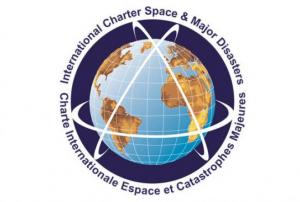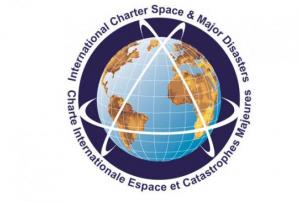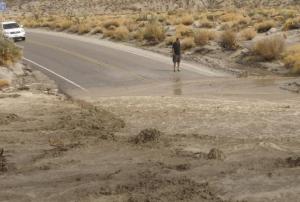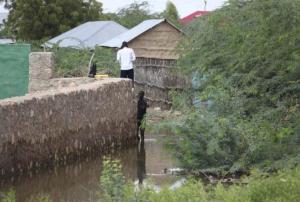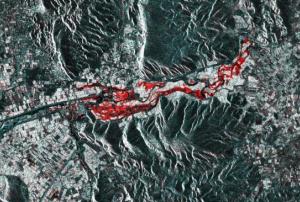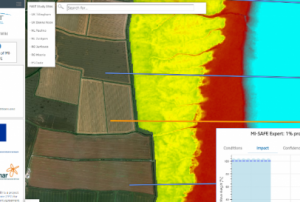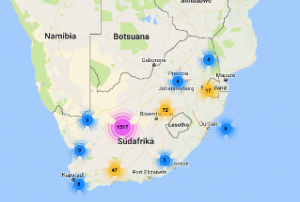Inondation
Definition
Facts and figures
Further information
UN-SPIDER Regional Support Offices with hazard-specific expertise
Related content on the Knowledge Portal
The International Charter Space and Major Disasters has been activated for flooding in Yemen on 2 June.
Cyclone Mekunu brought severe rainfall and winds causing flooding in areas of Yemen as it made landfall on 25 May. Local reports suggest that at least seven people have been killed and over 1,000 families have been displaced due to the flooding. The cyclone and floods have also damaged infrastructure and agricultural equipment in many districts of the Yemeni mainland. Some 120 fishing ships have reportedly been lost to the cyclone and a search is ongoing for missing fishermen.
One of the worst affected areas is the Yemeni island of Socotra in the Arabian Sea. Residents on the island are fleeing from torrential floods and more than 30 people are reported missing. Smaller islands off the coast of Socotra have also been heavily impacted and there is growing concern for the 2,500 families living on the islands of Abd Al Quri and Samhah as…
read more04/06/2018The International Charter Space and Major Disasters has been activated for flooding in Djibouti on 20 May and Sri Lanka on 21 May 2018.
In Djibouti, tropical cyclone Sagar caused flash floods across the country, impacting up to 30,000 people according to authorities. The United Nations Institute for Training and Research's (UNITAR) Operational Satellite Applications Programme (UNOSAT) requested the activation on behalf of the United Nations Office for the Coordination of Humanitarian Affairs (UNOCHA). UNOSAT is acting as the project manager for the activation.
In Sri Lanka, monsoon rains have claimed the lives of eight people and have left a further 172 requiring emergency assistance. Rain and winds have closed roads, interrupted power lines and displaced many people. With the continuation of heavy rains, landslides also became an issue.
The activation…
read more22/05/2018The forecasting of torrential monsoon downpours has become more accurate due to improved GPS and geodetic sensors. The system, developed by meteorologists at the National Oceanic and Atmospheric Administration (NOAA) Weather Forecast Offices in the United States of America has been in use since 2012. It features next-generation, real-time geodetic modules that have been added to existing GPS stations across California, enabling more accurate rain and weather forecasting.
More than half the annual rainfall in the American Southwest falls in the form of the unpredictable downpours during the North American monsoon season. Whilst monsoon precipitation is essential for the ecosystem of the region, the torrential rain often causes flash flooding and hence poses a risk to life and property. Technology that aids the accurate forecasting of these rains is therefore of paramount importance.
… read more15/05/2018Researchers at the University of Potsdam in Germany have analysed satellite data of nearly 30 years to retrace glacial lake outburst floods across Bhutan, China, India and Nepal. As a result of the survey, the scientists were able to reveal 10 previously undocumented floods in Bhutan, China and Nepal which had been caused by glacial runoff water suddenly breaking through moraine dams.
As global temperatures rise, runoff water of melting glaciers creates unstable lakes. Sudden breaches of those lakes can lead to natural disasters with devastating social, economic and environmental consequences as the lakes’ water bulks deluge villages, farmland, and important infrastructure. Because the Himalayas are home to a quarter of all glaciers world-wide, countries such as Bhutan, China, India and Nepal are particularly exposed to flooding.
Gathering in situ data in an area as vast as the Himalayas can be challenging, especially due to…
read more14/05/2018The International Charter Space and Major Disasters has been activated for flooding in Somalia on 7 May, caused by weeks of heavy rainfall.
The rainwater has caused the Shabelle and Juba rivers to run over and flood parts of HirShabelle, Jubbaland and South West state. As a result, more than 200,000 people had to be evacuated and emergency settlements are being built up for the victims. However, limited access to clean water might increase infections of water-borne diseases.
The activation has been requested by UNITAR-UNOSAT on behalf of United Nations Office for the Coordination of Humanitarian Affairs.
11/05/2018Greek Geographic Information Systems company Geospatial Enabling Technologies (GET) has tested a new crisis management solution based on services rendered through the Copernicus Sentinel Hub after flooding in Farkadona, Greece.
The Copernicus Sentinel Hub, set up by the European Commission and European Space Agency, is a service that provides quick and up-to-date satellite information to be used by authorities. Through the Sentinel-1 satellite in particular, they use radar to track differences between flooded and dry land through before and after images.
In late February, flooding and landslides caused by heavy rainfall affected the Farkadona municipality in central Greece, leading to evacuations and loss of farmland in the region. In response, GET used imagery produced by the Sentinel-1 satellite in a prototypical algorithm that uses the Sentinel…
read more30/04/2018- Publishing institution:
- Publishing institution:
- Publishing institution:

